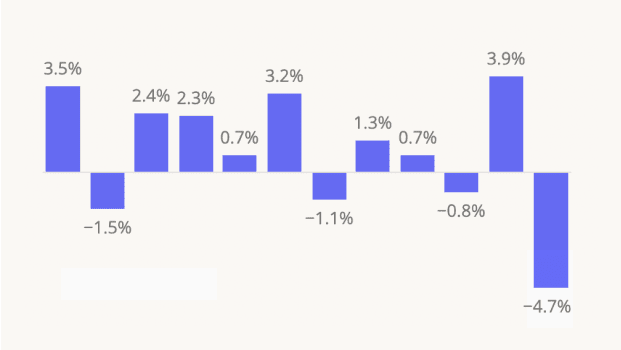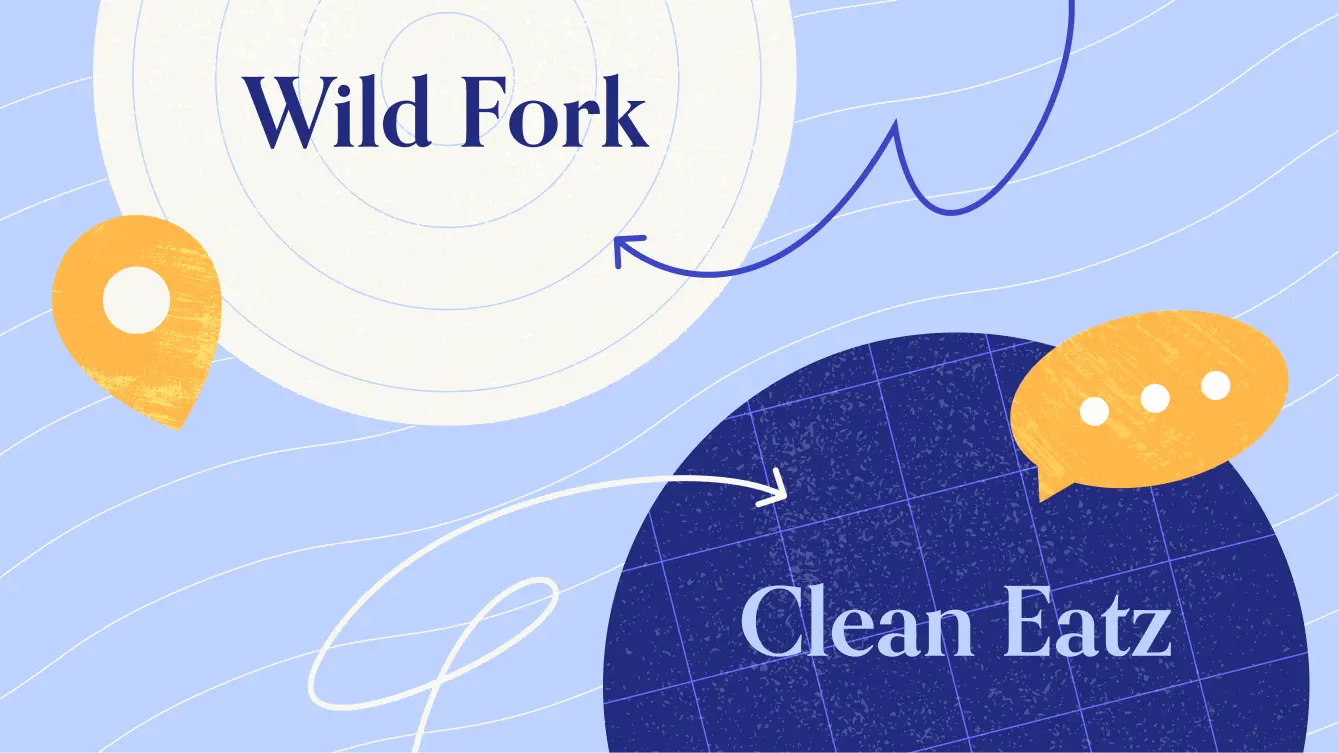Consumers are as interested as ever in heath-conscious eating, and many are turning to protein-packed diets to meet their fitness and wellness goals. We took a closer look at two retailers making a name for themselves in the high-protein, health-centric food space – Wild Fork Foods and Clean Eatz.
Meat-ing A Growing Demand
Wild Fork Foods is a paradise for meat and seafood lovers. The chain, which boasts nearly 60 locations nationwide, is at once a grocer, specialty products purveyor, and prepared foods destination. While much of Wild Fork’s product selection is frozen-meat-centric, the chain also offers a robust array of prepared foods.
And consumers seem to be resonating with the brands’ offerings – foot traffic to Wild Fork Foods consistently outpaced overall grocery visits, with YoY visits 33.8% higher in February 2025 than in February 2024, while overall grocery visits dropped by 1.7%. While some of this visit growth can be attributed to an increase in locations, Wild Fork’s strong performance bodes well for the brand.
Quick and Easy Does the Trick
Clean Eatz takes a different approach with its product offerings. While the chain boasts an on-site cafe, its real strength lies in its prepared meals and meal kits, which can be ordered individually or as part of full meal plans for the week. Each plan includes detailed nutrition information, making the chain an ideal option for those looking to take their diet to the next level.
This health-centric approach seems to be resonating with visitors, with Clean Eatz foot traffic outperforming the fast-casual restaurant segment in all months analyzed. And like Wild Fork, Clean Eatz has expanded over the past year, opening 14 locations between Q3 2023 and Q3 2024.
Wild Fork Wins on the Weekends
While Wild Fork and Clean Eatz share similarities in foot traffic trends and expansion efforts, a closer look at visitor demographics reveals key differences that highlight their respective strengths.
Compared to Wild Fork, Clean Eatz receives more of its traffic during the weekday – 77.3% of Clean Eatz’ visits take place on Monday through Friday, in contrast to Wild Fork’s 62.6%. Similarly, a higher share of Clean Eatz visitors visit the chain on their way to or from work – 14.9% and 10.0%, respectively – compared to Wild Fork’s 7.8% and 4.8%.
This suggests that Clean Eatz has become a convenient meal option for busy weekdays, while Wild Fork primarily attracts shoppers making planned stock-up trips.
Urban vs. Suburban Appeal
Examining demographic data reveals additional distinctions between Wild Fork and Clean Eatz’ customers beyond their shopping preferences. While both chains draw visitors from trade areas with relatively high median household incomes (HHI), Wild Fork’s captured market skews wealthier, with a median HHI of $106.3K, compared to $83.9K for Clean Eatz.
Wild Fork’s trade area also includes significantly more "Near-Urban Diverse Families" – middle-class households living in or near cities – while Clean Eatz thrived with suburban audiences, capturing a higher share of the "Blue Collar Suburbs" Spatial.ai: PersonaLive segment.
These differences highlight that there is plenty of room within the prepared foods segment for a wide range of concepts. By aligning their offerings with customer preferences – perhaps by expanding into suburban markets or focusing on premium selections – retailers can carve out their own space and thrive.
A Well-Rounded Meal
Wild Fork and Clean Eatz are making names for themselves in the prepared food and gourmet grocery spaces. By tailoring their offerings to different consumer preferences, they’ve proven that multiple concepts can thrive within the high-protein food segment.
Will the space continue to evolve? Visit Placer.ai to find out.




.png)
.png)

.png)
.png)












.svg)